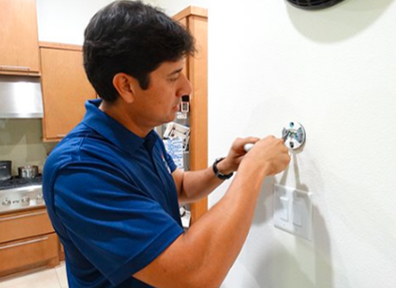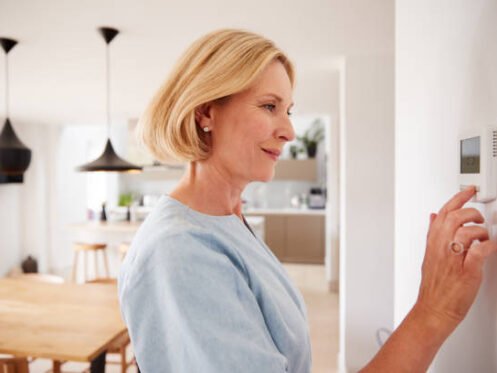In today’s rapidly advancing technological landscape, smart thermostats have emerged as a game-changer in the realm of home comfort and energy efficiency.
Gone are the days of manual temperature adjustments and wasted energy. With a smart thermostat, homeowners can take control of their indoor climate like never before. In this comprehensive guide, we’ll walk you through everything you need to know about installing a smart thermostat in your home.
Benefits of Smart Thermostats
Punbar Air: Complete Guide to Installing a Smart Thermostat in Your Home offer a myriad of benefits, from energy savings to enhanced comfort and convenience.
By learning your heating and cooling preferences and adjusting settings accordingly, smart thermostats can help reduce energy consumption and lower utility bills. Additionally, many smart thermostats feature remote access capabilities, allowing homeowners to control their HVAC systems from anywhere via a smartphone app.

Installation Process
Installing a smart thermostat may seem daunting at first, but it’s actually a relatively straightforward process. Most smart thermostats come with step-by-step installation instructions, and many manufacturers also offer online tutorials and support resources. Generally, the installation involves shutting off power to the HVAC system, removing the old thermostat, connecting the new thermostat’s wires, and configuring the settings.
Compatibility Considerations
Before purchasing a smart thermostat, it’s important to ensure compatibility with your HVAC system. Some smart thermostats are designed specifically for certain types of heating and cooling systems, such as central air conditioning, heat pumps, or radiant heating. Additionally, compatibility with your home’s wiring and Wi-Fi network is essential for proper functionality.
Tips for Optimizing Energy Efficiency
Once your smart thermostat is installed, there are several strategies you can implement to maximize its energy-saving potential. These include programming temperature setbacks when you’re away from home, scheduling heating and cooling cycles to align with your daily routine, and taking advantage of energy-saving features such as geofencing and occupancy sensors.
Installing a smart thermostat is more than just a tech upgrade — it’s a step toward smarter energy use, increased comfort, and long-term savings. By understanding the installation process, ensuring compatibility with your HVAC system, and using optimization strategies, you can get the most out of this powerful device.
Ready to take control of your home’s comfort and energy costs? Contact Punbar Air today for expert guidance and professional installation of the right smart thermostat for your system — and start enjoying a more efficient home tomorrow.
By Calixto Armas

